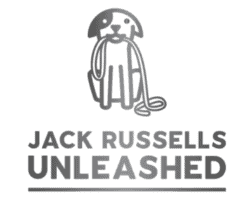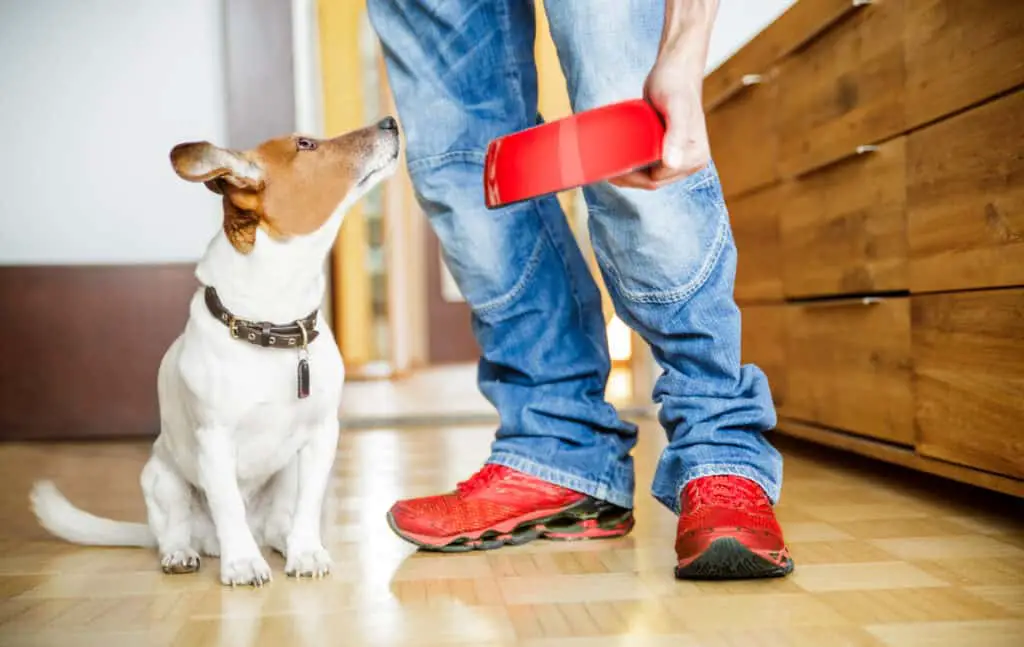Yes, like most canines, Jack Russell Terriers have dewclaws.
The term dewclaw refers to the non-weight-bearing toe on the upper, inner part of a Jack Russell Terrier’s paws. The dew claw is the first digit on the front and rear feet making it the equivalent to the human thumb and big toe.
Dewclaws are normal on the forelegs however some breeds have both front and rear dewclaws. Typically, Jack Russell Terriers only have the front dewclaws.
The dewclaws on the forelegs are normally more firmly attached to a dog’s legs than the ones on the hindlegs. You will be able to wiggle the front dewclaws a little bit in a forward and backward motion and be able to feel the bones that connect it to the paw. Rear and double dewclaws tend to only be attached by skin and move much more easily.
If you don’t see any dewclaws on your terrier, most likely the breeder removed them shortly after birth.
Why do Jack Russell Terriers have dewclaws?
Ancestors of modern canines used their dewclaws to help them climb trees and cliffs like cats. However, as the dogs evolved their dewclaws moved off the ground to higher up their legs. This gave them more speed to evade predators.
When travelling at high speeds a terrier’s front feet often bend at the point where their dewclaws meet the ground and these dewclaws provide extra traction, especially when turning or on slippery surfaces, to help stabilize the carpal (wrist) joint. Furthermore, when running over uneven terrain, a terrier’s dewclaws may touch the ground and help them move more quickly.
Jack Russell Terriers also use the dewclaws on their forelegs to hold objects like bones to better chew on them or climb out of the water if they’ve broken through ice. The usefulness of dewclaws on the hindlegs that are only attached by skin is less clear.
Should your Jack Russell Terrier’s dewclaws be removed?
Dewclaws serve an important purpose and should only be removed if there is a very good reason to do so, like an injury or disease. As a Jack Russell Terrier ages there is a higher likelihood that the carpal (wrist) ligaments will stretch and tear when they don’t have a dewclaw to provide stability. This increases stress on the other leg and spine joints to compensate for weakness in the carpus region thus increasing the terrier’s risk of laxity and arthritis.
Removal of a Jack Russell Terrier’s front dewclaws would be warranted if they were to sustain a severe injury (partially torn-off dewclaw), or they develop a disease (e.g., a cancerous tumor). But because these problems occur so infrequently removing healthy front dewclaws to prevent them is not done routinely and makes little sense.
It is more common for veterinarians to remove loosely attached rear dewclaws to prevent injury. Dewclaw injuries are not common in pet dogs and mostly occur in working dogs who get their dewclaws caught while running through rough terrain. But again, the incidence of injuries or problems to hind-dewclaws is still quite low, so the value of these surgeries would need to be in the terrier’s best interest to be considered.
Despite there being little evidence to support the removal of a Jack Russell Terrier’s dewclaws, some owners and breeders still routinely engage in this practice. Their argument for removal is that dewclaws are a weak appendage, barely attached to the leg that can be partly rip off leading to pain and possible infection. In some cases, breeders remove dewclaws to improve a Jack Russell Terrier’s appearance in the show ring.
If necessary, when should dewclaws be removed?
The best time to remove dewclaws is when a Jack Russell Terrier is around 2–5 days old. Removing a puppy’s dewclaws is a relatively easy process because the bones have not fully developed. Dewclaw can be easily and quickly snipped off by a veterinarian. Although this it is an easy process and it heals quickly, it is still a painful and unnecessary procedure for the puppy.
Adult dewclaw removal is a much more involved procedure that requires the surgical amputation of each dewclaw under general anaesthesia. To remove an adult dewclaw, a vet must carefully detach it from bone, nerves, muscles, and blood vessels.
Unfortunately, the recovery for an adult Jack Russell Terrier is longer. They need to have their movements restricted during their recovery and they usually need to wear an e-collar. Typically, this type of surgery is scheduled for the same time the terrier is being spayed or neutered.
Maintaining your Jack Russell Terrier’s dewclaws
Examine your Jack Russell Terrier’s dewclaws every week or so. Dewclaws can develop cracks, break, or tear, so checking them regularly is important to ensure they are healthy and not causing your terrier any pain. Look for a smooth and a relatively consistent color and be aware that discoloration like red or brown within the claw may indicate bleeding or another injury. Dewclaws that have swelling or an odor may be infected and it is best to seek advice from your veterinarian.
Most Jack Russell Terriers are relatively sedentary, so their dewclaws require trimming for their continued health and well-being. To ensure they are kept at a healthy length, a general rule of thumb is to trim your Jack Russell Terrier’s dewclaws every 3 to 4 weeks or once they start touching the ground.
An extremely an active Jack Russell Terrier may need more infrequent trimming. This is because when running they use their dewclaws to gain traction and change direction and this regular contact with the ground helps to wear them down and keep them short. But it is still important to check them regularly for injury.
Generally trimming dewclaws is a lot easier than clipping their other nails. However, be aware that when dewclaws are clipped too short or with the wrong tools it could result in injury to your terrier. This may cause them to be very reluctant to have them trimmed in the future. So, it is important to consider whether you are capable and comfortable trimming your dog’s dewclaws before undertaking the procedure. Furthermore, if your terrier has dark or opaque claws that makes identifying the quick difficult, trimming them is best left to a professional.
How to trim dewclaws
Use dog nail clippers
Make sure that you have a nail trimmer meant specifically for canine nails. Human nail clippers can cause cracking and splitting on a dog’s nails.
Identify the quick
Dewclaws have a fleshy bed that supplies blood to the nail core called the quick. For a terrier that has light nails the quick can be identified by the soft, pink tissue in the centre of the nail that extends partway down the nail. It resembles a nail-within-a-nail.
Finding the quick on a Jack Russell Terrier that has dark nails is a little more difficult. The best way is to lift your terrier’s paw and look head-on at the centre of the unclipped nail. A small dark circle in the centre of the nail indicates the beginning of the quick. It is important not to clip any part of the nail in the circle as you’ll be clipping into the quick. If the centre-circle is not easily identified, snip off the smallest edge of the nail at a 45-degree angle. Remember cutting into the quick is painful and could seriously injure your terrier.
Find the right length
Run your finger under the nail and feel for the curl; this is the part you cut. Aim to trim the nail to a length that removes the curl and leaves visible room between the quick and the cut. A good indicator of this is when your finger slides easily off the underside of the nail after being cut. If unsure, always opt for longer nails. You can always go back and trim more, if necessary, but once the nail is cut there is no going back. Remember cutting too close to the quick could cause serious pain and injury to your terrier.
What do you do when your Jack Russell Terrier damages a dewclaw?
As mentioned, dewclaw injuries are relatively rare, but they do still occur. When a dewclaw becomes partially or completely pulled off, broken, split, infected, or ingrown, they may need treatment from a veterinarian to remove the damaged nail or antibiotics and pain relievers to combat an infection.
If there is a delay in being able to seek veterinary assistance, it is important to know what to do in the interim, especially since most nail injuries are extremely painful and prone to infection. If possible, carefully remove the remaining piece of nail and try to stop the bleeding. Clean the wound and disinfect the area to minimise the chances of infection. Bandage the paw and seek assistance from your veterinarian.
Sources:
What Are Dewclaws? | Do Dog Dewclaws Need to Be Removed? | PetMD




![How Much Exercise Does A Jack Russell Terrier Need? [Complete guide for all life stages]](https://jackrussellsunleashed.com/wp-content/uploads/2022/03/iStock-1143749718-1024x683.jpg)
![My Jack Russell Terrier Hates Baths! [4 reasons why & 5 helpful bath time tips]](https://jackrussellsunleashed.com/wp-content/uploads/2022/03/iStock-613556174-1024x683.jpg)
